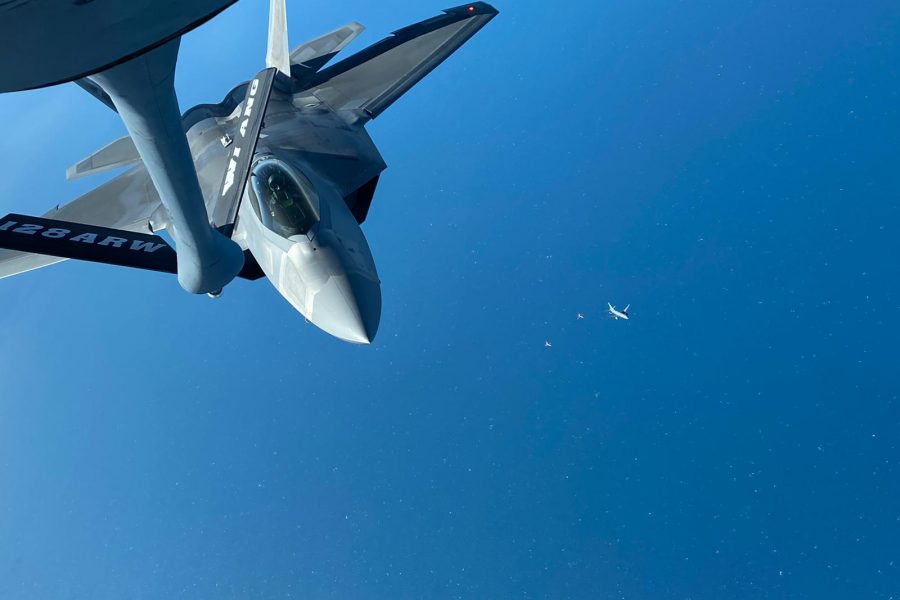The Air Force’s aerial refueling fleet could be the first platform to adopt new technologies developed under the Advanced Battle Management System effort, integrating pods complete with advanced communications and data links to feed information, along with gas, to combat aircraft as early as next year.
The Air Force is evaluating new technologies, both hardware and software, under ABMS to create an “internet of military things” that will connect sensors and shooters at machine speeds. So far, no actual systems have been purchased, but Department of the Air Force acquisition boss Will Roper said Nov. 24 he could see the service push the new pods out to its KC-135, KC-10, or KC-46 fleets in the near future, revolutionizing the tanker’s role in a fight.
“If we try to do podded solutions to artfully move around legacy hardware, we can move pretty quickly,” Roper told reporters. “I think that’s something we can do within a year …. I think the tech has that level of maturity. Certainly within 18 months, I think we could have these platforms as true battle nodes.”
So far, the Air Force has tested satellite communication pods on KC-135s and used a KC-46 for tactical command and control. Roper said he envisions a tanker collecting data and intelligence about the battlefield, and passing it along to a fighter while it is receiving fuel, a capability that could be important in a high-end fight.
“I do like the idea of topping up on data while you’re topping up on gas. It makes a lot of sense to me, especially if that fighter or Next Generation Air Dominance platform is coming out of the fight, if it has had comms denied there,” Roper said. “And of course we’re working hard to make sure that’s not the case, but if it has, then coming out and getting the latest data might be something it needs to do completely separate from needing to get gas. That may be an important [concept of operations].”
While the goal of ABMS is to better connect all platforms, tankers “might get to the goal line first,” though Roper would not specify which of the service’s three refuelers is the leading candidate. Air Mobility Command has proven to be “one of the most forward leaning commands that we have” in joint all-domain command and control thinking and putting its tankers to the forefront. Recent upgrades to the tanker fleet have increased their capability in providing data, with the KC-135 receiving Link 16 datalinks as part of the Real Time Information in the Cockpit upgrade. The KC-46 has this capability from the factory, along with other improved communication and defensive systems.
The Air Force announced Nov. 24 it has designated its Rapid Capabilities Office to be the program executive for ABMS, signaling that the effort is moving beyond tests and experiments toward actual acquisitions.
